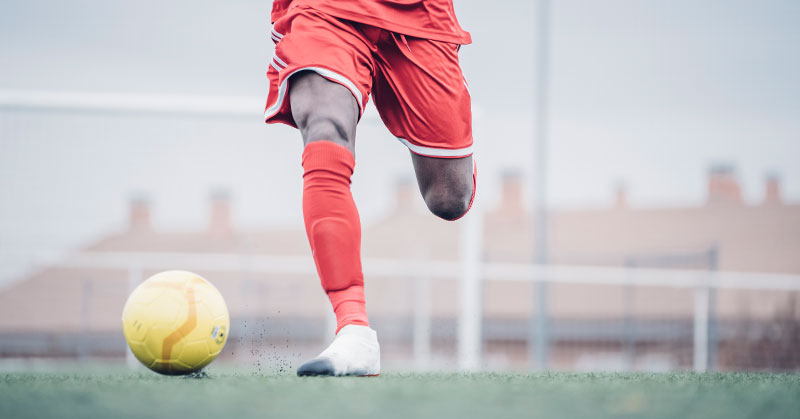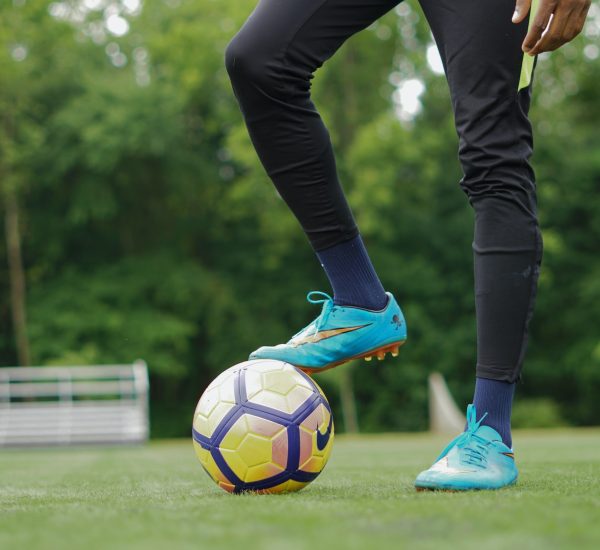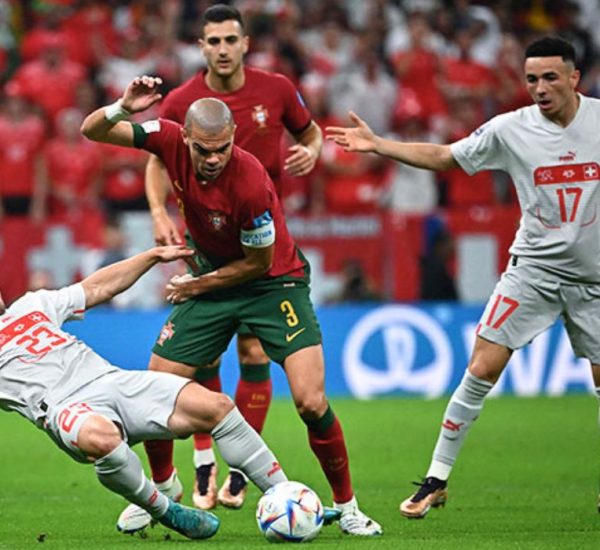Soccer is a complex sport with many different positions, and the winger position can be challenging to understand for beginners. Most people don’t understand the winger position in soccer, making it hard to follow the game.
The winger position is one of the most important in soccer, and Football Toast is here to help you learn all about it. We’ll explain what wingers do on the field, how they contribute to the team’s success, and some of the best players in this position.
Position of the winger in soccer
The winger is a position in soccer responsible for providing width to the team while also being a crucial part of the attack. The winger typically plays outside the midfield and their leading role in delivering the strikers’ crosses into the box.
The winger must be able to beat defenders one-on-one and have the ability to put in a good cross. They must also have good stamina as they will be required to track back and defend when necessary.
The best wingers can provide an attacking threat and defensive solidity, often some of the most exciting players on the pitch.
Examples of world-class wingers in soccer are:
- Neymar (Paris Saint-German)
- Vinicius Junior (Real Madrid)
- Mohamed Salah (Liverpool)
- Sadio Mane (Bayern Munich)
- Son Heung-min (Tottenham Hotspur)
- Raheem Sterling (Chelsea)
- Lorenzo Insigne (Napoli)
- Jack Grealish (Manchester City)
- Ansu Fati (Barcelona)
- Marcus Rashford (Manchester United)

Tasks of the winger in soccer
The winger in soccer is responsible for a few essential tasks. Firstly, they must provide width to the team and stretch the opposition defense. It can be done by hugging the touchline or making diagonal runs into space.
Secondly, wingers are often called upon to cross the ball into the box for their teammates. Again, they need to have good accuracy and technique to be successful at this.
Finally, wingers must also track back and help their team’s defense when necessary.
Duties of the winger in soccer
The winger in soccer is responsible for several different things. First, they must be able to take on defenders and beat them in one-on-one situations. They also need to be able to put in crosses when the opportunity arises.
Additionally, they need to track back and help their fullbacks when required. Overall, the winger needs to be a versatile player who can contribute in both an attacking and defensive capacity.
Is the winger a midfielder or forward?
In soccer, the winger is considered a forward who stays wide on the field, near the touchlines. As their name suggests, wingers provide width to their team’s attack.
Soccer wingers are typically fast and good at dribbling, which allows them to beat defenders and get crosses into the box.
While they may not reach as many goals as strikers, soccer wingers play an essential role in creating scoring opportunities for their team.
Is a winger the most challenging position in soccer?
Winger in soccer is one of the most challenging positions. The winger is responsible for providing width to the team and attacking down the flanks. They need to be able to beat their defender one-on-one and put crosses into the box.
Not only that, but they also need to track back and defend when their team is under pressure. It is a demanding position that requires speed, stamina, and technical ability.
While the winger position in soccer may not be the most glamorous position on the soccer field, it is undoubtedly one of the most important.
What makes a good winger in soccer?
A winger in soccer is a player whose main job is to provide width and support to the team. They are typically positioned on the outskirts of the field, and their main objective is to cross the ball into the box or take on defenders one-on-one and create scoring chances.
To be effective, wingers must have good speed, dribbling ability, and stamina. They must also be able to put in accurate crosses when called upon.
Those who excel as a winger can significantly impact the game and help their team win.
How should a winger move?
As a winger in soccer, your job is to provide width and support for your team. So you’ll need to be good at dribbling and passing, and you’ll need to have the stamina to run up and down the field. But how should you move when you’re on the wing?
To start with, you’ll need to stay wide. It will give you more space to work with and make it harder for the opposing team to double-up on you.
When you do have the ball, try to keep it on the outside of your body. It will make it harder for defenders to dispossess you. And when you’re making a cross, remember to put plenty of curve on the ball. Again, it will make it harder for the goalkeeper to save.
Following these simple tips can significantly impact your team’s attacking performance. So get out there and start putting them into practice!
How do you defend as a winger?
As a winger in soccer, your main defensive responsibility is to prevent the opposing team from crossing the field into your team’s half. To do this, you must stay between the touchline and the halfway line and close to your own right winger.
When the opposing team has the ball on their right side, you should pressure their winger and force them to pass backward or make a mistake.
If they have the ball on their left side, you should drop back and be ready to clear any crosses that come into the box. By staying disciplined and doing your job, you can help keep your team’s defense solid and prevent the other team from scoring.
How can I be a faster winger?
If you play winger in soccer, speed is key to being successful at the position. Consequently, you can do a few things to help yourself become faster on the field.
First, make sure you are in good physical shape. This means eating a nutritious diet and getting plenty of exercises. It would help if you also focused on improving your sprinting technique.
Pay attention to your form and ensure you reach forward with each stride. Finally, be sure to practice sprinting with a ball at your feet. This will help you make quick decisions while running at full speed.
These tips will make you a faster winger and help your team win more games.
How do you train to be a winger in soccer?
When training to be a winger, you should focus on drills that will improve your speed, endurance, and ball control. Sprints are an excellent way to build stamina, while dribbling drills help refine your technique.
It would help if you also practiced your crossing, as this will be a key component of your game. These training tips will help you become an influential winger in soccer.
Soccer formation that plays with wingers
There are many ways to play with wingers in soccer, but one of the most common and effective formations is the 4-3-3. This formation uses four defenders, three midfielders, and three forwards, with the wingers playing an essential role in the game’s offensive and defensive phases.
The 4-3-3 formation is very versatile and can be used to attack or defend, depending on the situation.
The 4-3-3 formation is also a good choice for teams that want to play an attacking style of soccer. With two wingers on each side of the field, there are plenty of options for creating scoring chances.
The 4-3-3 formation can be adapted to various playing styles, so it’s a good choice for teams that want to be able to change their approach depending on the game situation.
One of the main disadvantages of the 4-3-3 formation is that it can be vulnerable to counterattacks. For example, if the wingers are caught upfield when the other team scores a goal, it can be challenging to recover and defend against the counterattack.
Another disadvantage of the 4-3-3 formation is that it doesn’t provide much support for the central defenders. This can make it difficult to defend against long balls or through passes in the middle of the field.
Despite these disadvantages, the 4-3-3 formation is still a popular choice for many soccer teams. It’s a versatile formation that can be adapted to different playing styles and offers a good balance of attacking and defensive players. If you’re looking to add wingers to your soccer formation, the 4-3-3 is a great option.
End of Line
The winger is a key player in soccer, and it’s essential to understand their role on the field. They are responsible for providing width in the attack and often make runs down the sidelines to create chances for their teammates.
Wingers need to be able to dribble and pass well and have good stamina so they can run all game long. They also need to be strong defensively since they often help with marking opponents.
If you’re coaching or playing soccer, it’s important to know how to use your wingers effectively. Ensure they stay wide when attacking and look for opportunities to cross the ball into the box.
Be sure they track back when defending and mark opposing players closely. With practice, your team can become more dangerous using the wings properly.



